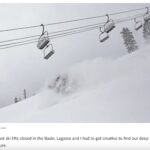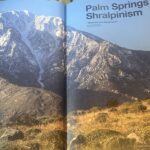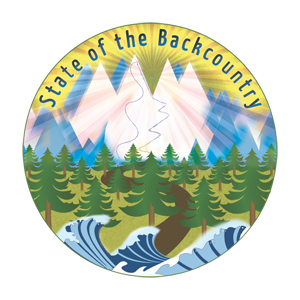Last Spring, years of planning paid off. Joining veteran Himalayan guide Luke Smithwick, our vision of a Himalayan Alpine Guides camp came to fruition. The inaugural trip brought us to Ladakh, India where we were able to visit high mountain passes with incredible ski touring access, as well as establish a horse assisted backcountry skiing basecamp. The following story abut our trip, and the vision for future Himalaya Alpine Guides camps was published in the winter edition of Ascent Backcountry Snow Journal. We look forward to offering more affordable, exploratory ski touring basecamps in the Himalaya over the coming years. If you have any interest in seeing this vast mountain range via ski touring be in touch. Enjoy the piece from Ascent:
Why walk down when you can ski down? The mantra of the skier is as simple as it is direct. Once you start seeing the mountains through the eyes of a skier everything changes. You’re no longer looking at a peak solely as the aesthetic matter it is, you’re looking at a way to ski it, whether it’s “skiable” or not. The latter thought has a long history in the Himalaya as to most snow sliders across the world the narrative of alpinism is far more dominant in the region than that of the skier. And for good reason. The Himalaya is home to more than fifty 7k-meter peaks, and when including the Karakoram, every 8k-meter peak in the world. The history of the alpinist in the region is steep, and that type of skiing at altitude is not for everyone. But it was that same thought veteran Himalayan guide Luke Smithwick and I shared a few years back that brought us together this past spring. As much as I believe if there’s snow, and you think you can ski it, why not give it a try regardless of altitude, the reality is once you get below 7k-meter threshold and into the 5-6k-meter mark, the Himalaya transforms into one of the most accessible, unique backcountry skiing destinations in the world.
Luke has known this for some time. He has guided in the range since 2010, completing 51 expeditions to date, and founded Himalaya Alpine Guides back in 2012, which has allowed him to deeply explore the range as an alpinist, skier, and trekker for the past several years. From January through March, Luke is the snow safety director for Gulmarg Ski Resort and backcountry avalanche forecaster for the Gulmarg Avalanche Advisory in Kashmir. He has been the lone Westerner working with locals in what has become the most famous place for skiing and riding in the Himalaya. Gulmarg Ski Resort is a gondola-accessed skiing and snowboarding destination in the Pir Panjal range of the western Himalaya. The backcountry access is mind-blowing, and slowly but surely, word has spread across the globe about this uniquely situated, powder drenched, cultural ski experience in the heart of the Himalaya.
It was here that Luke and I met a few years back while I was on assignment guiding, and Luke was in the midst of his season. It was a serendipitous series of events that brought us together, and somehow in the midst of his heavy daily work demands and my guiding schedule we were able to carve out some time to chat about the ski touring potential of the Gulmarg region. Naturally, the more we talked, and the more I learned about Luke, our thoughts turned to Pakistan, Nepal, Tibet, and other parts of the Indian Himalaya. As much as we too had been influenced by media centers reporting on Himalayan expeditions growing up, and much of that was either centered on climbing Everest or climbing high mountains in some other part of the range, our focus was on skiing. And it wasn’t necessarily to ski the first descent of 8586 meter Kangchenjunga. It was about quality skiing. Accessible skiing. Skiing that leant itself to a backcountry skiing aesthetic, that would be relatively affordable for guests, that worked with fluidity and in respect of the local cultures with whom we worked with and would interact with along the way.
Read the rest of the story at Ascent Backcountry.com





